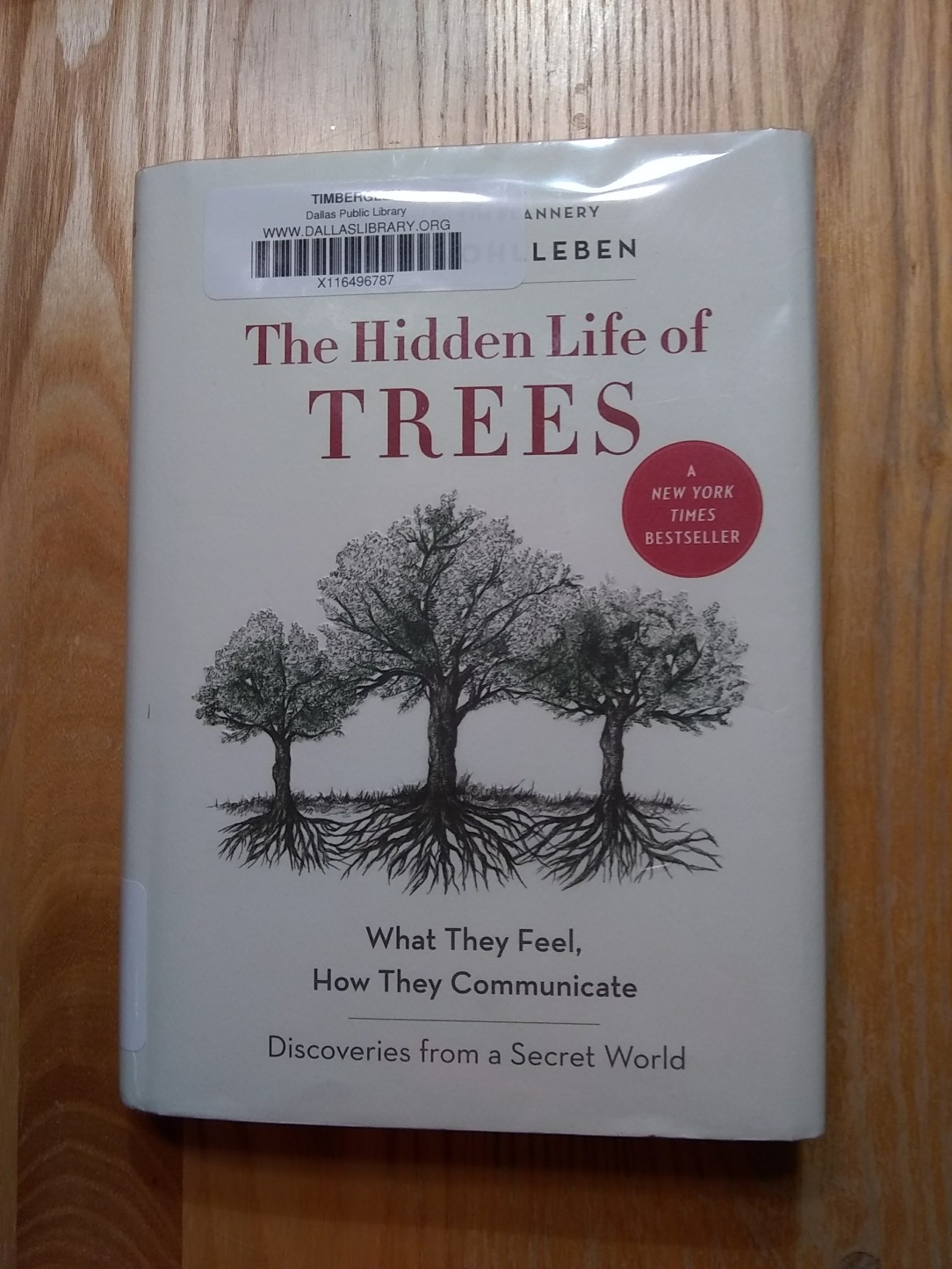Another book not in my original stack to read. I came across yet another recommendation to read it, so I thought it was time.
“Therefore, the color of organisms and objects is dictated by the color of the reflected light. And in the case of leaves on trees, this color is green. But why don’t we see leaves as black? Why don’t they absorb all the light? Chlorophyll helps leaves process light. If trees processed light super-efficiently, there would be hardly any left over–and the forest would then look as dark during the day as it does at night. Chlorophyll, however, has one disadvantage. It has a so-called green gap, and because it cannot use this part of the color spectrum, it has to reflect it back unused. This weak spot means that we can see this photosynthetic leftover, and that’s why almost all plants look deep green to us.”
This is an example of a fun fact from this book. The author, Peter Wolleben, is a German forester who started his career working for a commercial lumber business but now has been hired by the community in which he lives to protect their natural forests. Research on the trees’ lives in the forest has revealed much fascinating information on how they grow, propagate, defend and repair themselves, cooperate, communicate, die, and return to humus on the forest floor. There is fairly over-the-top amount of anthropomorphism by the author throughout the book, which may put off some readers. I just took it as an effort to make us identify with trees, and spur us on to take up the cause of protecting the forests. If you have time for nothing more, it would be worth your while to read the “Foreword” by Tim Flannery and the “Note from a Forest Scientist” by Suzanne Simard at the end of the book.
I’m looking at the trees around me with different eyes, and I’m yearning to make a trip into an undisturbed forest.

Wow. Green, wow. That’s all I’ve got. It’s going on my list this second
LikeLiked by 1 person
I read this book last winter challenge ! I am impressed at how much we readers can overlap despite the volume of good stuff to read out there 😉
LikeLiked by 1 person
Ah, it was you, Borkali. When I was posting the photo of the book cover, I messed up and posted it twice. When scrolling down through the all of the images from the past, looking for an edit button, I saw The Hidden Life of Trees there. Did you like it?
LikeLiked by 1 person
Ha! I enjoyed it a lot — I did find some of the language problematic as a scientist — a little too emotional at times let’s say, which can be ok but if you’re looking to dive into biology it’s important (to me) to limit emotional thinking… it detracts from what should be analytical thinking. This is actually very hard to explain I’m realizing.
Suffice to say- I enjoyed the book, I did, but being a scientist reduces me ability to suspend my disbelief. I also struggle with over simplification of science for the sake of getting people to like your writing.
Does that make sense at all ?
LikeLiked by 1 person
Yes, this makes sense to me, Borkali. You’ve described my reservations very well with your phrase “emotional thinking.” When I got into this book, I was reminded of a Botany class taken by freshmen to fulfill a science requirement wherein our teacher drilled and drilled out of our heads the idea of intentionality on the part of plants. His exams were full of trick questions designed to catch us thinking that way. This was many, many years ago, and I hadn’t thought about it for ages. He would have had a heart attack if he had read this book!
LikeLike
To
This is an interesting thread. I understand the argument against emotional thinking in science. I think a big problem today is a misunderstanding of sciences role and limits. Particularly as it relates to ethics. Yet, when taken non scientifically, as this book must be, the use of simplified scientific knowledge is a useful way of articulating valuable products for examination in the other fields. So I am more than okay with it, people in many other fields dumb down their points and language for other audiences.
My measure is one. If I can find just one interesting, exciting or thought provoking element then that is the justification. If I can teach each student one thing, or reach one person with one thing, or if a book has one magical line that makes me want to remember it- it’s worth it. Since I clearly saw that in the book review, I’m excited to read it in all it’s glory and if I’m lucky and it’s good there might be more.
LikeLiked by 1 person
I appreciate what you’ve said here, and I thank you for saying it. Oh, there’s more to find in this book. I would dearly love to hear what you have to say after reading ‘The Hidden Life of Trees.’
LikeLike